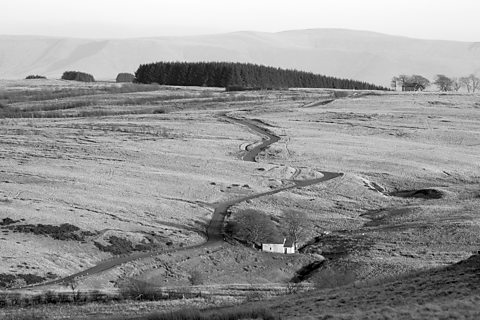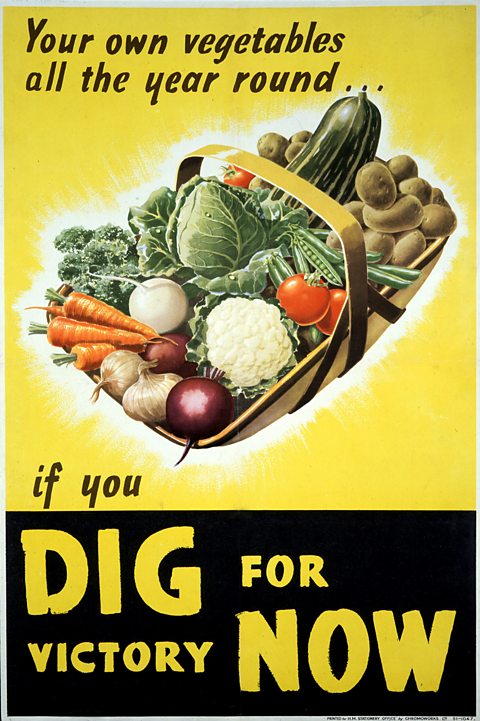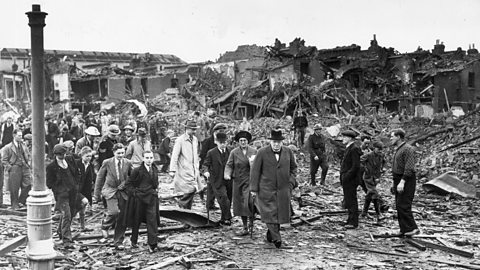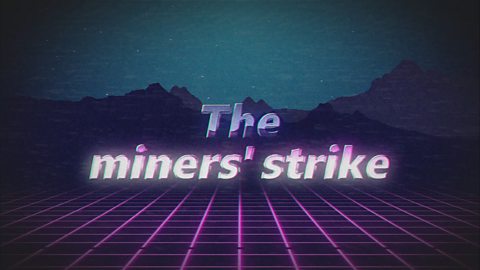The start of the war
The Second World War started after Germany attacked Poland in 1939, and refused to withdraw its troops from the country after a final warning from Britain. The British Prime Minister, Neville Chamberlain, declared war against Germany on 3 September 1939. France decided to join Britain in this effort.
Video - The Second World War
It’s 21 October 1939 and World War Two is underway.
Young men have been receiving conscription letters from the government since May. This was the first of many sacrifices people had to make on a personal, community and national level.
Under Prime Minister Chamberlain’s leadership, conscription to the British armed forces was the government’s way to ensure they could achieve total war.
The reality for many at the time was a harsh one. Every man over 18 had to go to war. They had a few months of training - but that’s hardly enough for a marathon let alone a war.
Not everyone obeyed. For some this went against their religious beliefs. They were called conscientious objectors. One of Wales’ most famous was the poet, Waldo Williams.
Today you can buy most food and drink anywhere and it gets to us from all over the world, but during the war it was a very different story. When vital supplies were cut off food had to be rationed. This began on 8 January 1940. Each person was allowed to buy 2 ounces of butter, 4 ounces of bacon or ham and 8 ounces of sugar per week and they saved most of it for Sunday dinner after church or chapel, as this was the most sacred day of the week and they wanted to make it special.
The sacrifice wasn’t just on a family level, whole communities were affected. At the beginning of World War Two, the War Office urgently needed extra land and facilities for training and artillery practice. Mynydd Epynt and a smaller mountain to the west of it, Mynydd Bwlch-y-groes, were selected. Sounds OK to me, a stretch of unused land, why not?
Well, until 1940 the area was occupied by a community of farmers and their families, but in order to create the training area, 54 homes had to be vacated and 219 people were forced to leave. A whole community had to pack their bags and take their traditions with them. This was happening all over Britain and goes to show how much people had to sacrifice in order to win the war.
The large-scale ways in which World War Two changed the world are still talked about and how many sacrificed so much. In many ways it’s contributed to and shaped the way we live today.
Innovation flourished during wartime - let’s take a look at what was created. It gave us better radar, strong glue, duct tape and the world’s first ever real computer. Things we may take for granted today, but it goes to show that in a time of despair and great sacrifice, people are able to pull together and be pioneers.
How did the Second World War impact people’s lives?
Conscription and training
Britain had started to prepare for the threat of war in May 1939 by introducing conscription - a system forcing single men between 20 and 22 to join the armed forces. About 240,000 men joined to receive military training.
At the start of the war, the National Service Act 1939 was passed which expected all men between 18 and 41 to join the armed forces, subject to passing a medical test. Men in key industries and jobs did not have to join the armed forces, eg:
- agriculture
- medicine
- engineering
- education, eg teachers
As the war worsened by 1941, the Government reviewed the rules. Men up to the age of 60 were expected to do some form of National Service. Single women and childless widowA woman who has lost her husband or partner. could also be called up to do specific jobs, eg working in industry.
Conscientious objectors
Some refused to join the armed forces for reasons involving beliefs, religion and ethics – they were known as conscientious objectors. They had to appear before a tribunal to argue their case for refusing to join. Many were offered the option of doing different work instead, eg working on farms or in hospitals.
One of Wales’s most famous conscientious objectors was the poet and pacifistSomeone who is opposed to the idea of fighting or war., Waldo Williams. Following a period in prison during the First World War for being a conscientious objector, Waldo Williams again refused to join the army in 1940. This led to him losing his job as a school headteacher.
Training areas
Mynydd Epynt was selected to be a training area by the War Office. In December 1939, 219 people who lived in 52 households were told that they would have to leave by April 1940 so the land could be used to train the army. This was known as ‘The Clearing’. A Welsh-speaking community was destroyed.
Some had objected to this and many people believed they would be able to return to their homes at the end of the war. It is still a military training area today.

Food rationing
Food rationing had to be introduced in 1942 because British ships that were carrying food were being attacked by German forces. They used submarines called U-boats to limit the food reaching Britain. Docks and ports such as Swansea, Newport and Cardiff were bombed too.
Food rationing meant that every adult and child received a ration book to buy goods from butchers, grocers and milk sellers. Each book had vouchers to buy specific items. More and more food was rationed as the war went on, eg:
- bacon and ham
- margarine
- sugar
- milk
- cheese
- loose tea
- eggs

Children were able to have more of some items, especially milk, as they were still growing. The penalties for breaking food rationing rules were very harsh and led to a fineFinancial penalty. or imprisonment.
The food rationing system led to more people growing their own food. In 1939, the Dig for Victory campaign was introduced to encourage more people to grow vegetables in their gardens or allotments. By the end of the war, there were 1.4 million allotments in Britain and 75 per cent of food was grown locally. Many also kept animals for food, eg goats, chickens and pigs.
Rationing continued even after the end of the war and food rationing didn’t end completely until 1954. People remained careful with food even after the war, avoiding any waste of food and materials.

The Blitz
The word Blitz is short for the German word, Blitzkrieg, meaning lightning war. It was a period when cities, ports, industrial factories and military bases were bombed from the sky.
The bombing started in London on Saturday 7 September 1940 and led to 57 nights of attacks. Cardiff and Swansea suffered the biggest attacks in Wales. Swansea city centre was destroyed over three nights of bombing in February 1941. The German airforce dropped 30,000 bombs, killing 227 people.
A number of children were moved from cities such as London, Coventry, Birmingham, Swansea, Plymouth and Sheffield. They were known as evacueesPeople that move from somewhere dangerous to a safe place. . Wales accepted around 110,000 children. Many moved to rural areas and learned Welsh.

Consequences of the war
300,000 British soldiers were killed in the Second World War, and 15,000 of those were Welsh. One of the main impacts of the Blitz was the number of homeless people and the businesses that were destroyed, which led to a weak economy following the war.
Considerable political changes happened in Britain following the war. Clement Attlee, of the Labour Party, was elected as the Prime Minister of Britain in July 1945, replacing Winston Churchill.
Women’s lives developed because of their key roles as part of the war effort. One major change was that many women continued to work in their new roles rather than returning to traditional jobs as happened at the end of the First World War.
People felt more British and patrioticFeeling strongly for the country. due to the messages in cinemas and on posters. British people had a new purpose and freedom to their lives after a period of living through a war.
The Second World War was also a time of innovation that led to advances in technology and medicine.
Quiz - The Second World War
More on Conflict and peace
Find out more by working through a topic
- count2 of 4

- count3 of 4

- count4 of 4
